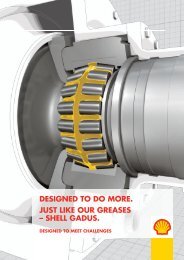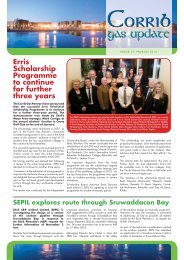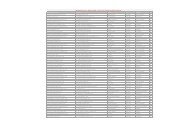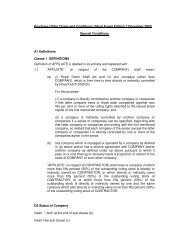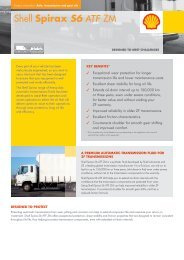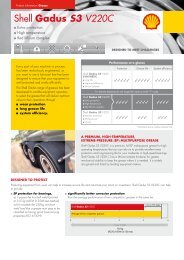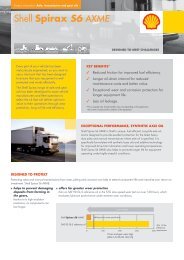OBEN GAS DEVELOPMENT PROJECT
OBEN GAS DEVELOPMENT PROJECT
OBEN GAS DEVELOPMENT PROJECT
Create successful ePaper yourself
Turn your PDF publications into a flip-book with our unique Google optimized e-Paper software.
Chapter One Introduction, Administrative & Legal Framework<br />
1.1 INTRODUCTION<br />
CHAPTER ONE<br />
The Oben Field is situated in OML 4 ca. 60 km North East (NE) of Warri (Figure 1.1, Appendix I). A<br />
major structural building growth fault separates the field into two blocks. To the south, the downthrown<br />
block is a simple elongated rollover structure trending in the East West (EW) direction parallel to the<br />
major growth fault while the upthrown block is a footwall closure dipping toward the north.<br />
The field was discovered in 1972 on two-dimensional (2D) seismic dataset and came on stream in 1974<br />
with oil production peaking at 40 Mbopd in 1985. A total of 32 wells drilled in the Oben Field<br />
encountered hydrocarbons. Well 33 was drilled off structure. In the shallower reservoirs (C, D and E<br />
sands) the hydrocarbons are located in the downthrown block while in the deeper reservoirs (F, G and<br />
H) sands; the hydrocarbons are mainly in the upthrown block.<br />
Shell International Exploration and Production (SIEP) carried out a detailed Field Review in 1982, which<br />
formed the basis for a limited Field Development Plan of 1990. This led to the drilling of Oben-29 to<br />
Oben-32 in 1990 and 1991. Oben Field supplies non-associated gas through drainage points in 3<br />
Oben Wells (Oben-26, -27, -28) to NGC via ELPS. The existing flow station and gas plant has<br />
throughput capacities of 60 Mb/d and 90 MMscf/d respectively. The 1990-limited FDP suggested that<br />
the reservoir and fluid characteristics (strong aquifer, light crude and high GOR) make the use of gaslift<br />
unattractive due to low commercial value.<br />
A 3D seismic data (290 sq. km of 3000% multiplicity) was acquired over the Oben Field in Q3 1998 and<br />
processed in Q4 1999. This 1998 seismic data formed the basis for the Integrated Petroleum<br />
Engineering Studies (IPES) carried out in 2002. A total of seven key horizons namely C8, D2, E1, E3,<br />
F7, G2 and H1 (Figures 2.1 and 2.2) were correlated over the entire field. Interpretation was done in the<br />
Charisma workstation. The interpretation of the 3D seismic data led to a better understanding of the<br />
structural configuration of the Oben Field with resultant revisions in the volumes booked in the ARPR<br />
1/1/2004. There are significant changes in the structural pattern in the footwall closure against the major<br />
boundary fault compared to the previous 2D maps. The seismic interpretation and mapping of the year<br />
2002 were extended to cover the NAG reservoirs, however, no detailed study in terms of 3D static and<br />
dynamic reservoir modeling and integrated study were carried out for any of the NAG reservoirs.<br />
Due to the increasing Western Domestic Gas demands from both existing and new customers in the<br />
network and the demand occasioned by the West Africa Gas Pipeline (WAGP), an Oben Field NAG<br />
reservoirs study team was set up in 2003 to carry out a detailed study of the NAG reservoirs.<br />
Eight (8) major gas reservoirs (D2000M, D6500M, E6000M, E7000M, E8000M, F7000M, G1000M and<br />
D5000M--selected on the basis of FGIIP and depth), constituting about 60% of the field GUR, were<br />
modeled using SPIDER and MoReS.<br />
These models were considered sufficient by the team since they captured the subsurface uncertainties<br />
in the reservoirs and hence have been used for this study.<br />
Compared to 1/1/2005 ARPR there was a 1.2 % and 17 % reduction in Exp FGIIP and UR<br />
1-1






